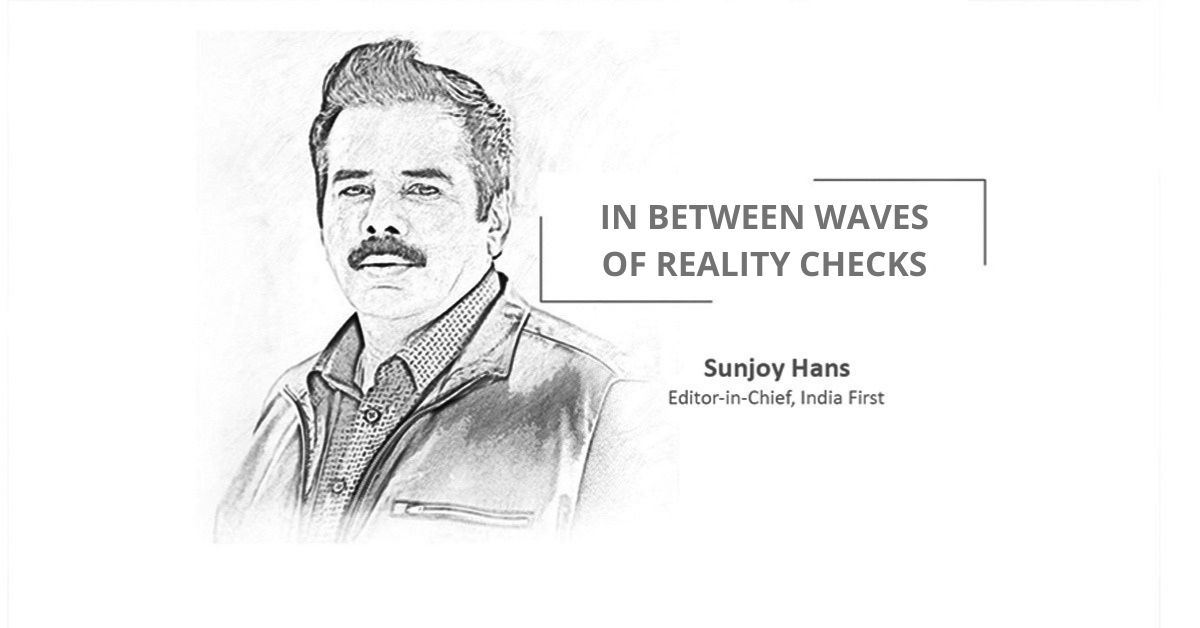As the threat of a third wave of the coronavirus pandemic looms larger than ever over India, the danger from the second one is far from over. The country is still witnessing more than 40,000 new Covid-19 infections every day and the virus officially killed over 1,200 people as early as on July 8, breaching the four-figure mark for the first time since June 26. The way things stand at present, there has been an undeniable slowdown in the downward trend of daily cases and a slight increase in the total positivity rate.
We only have ourselves to blame this time.
Recent visuals of crowded markets and hill stations, where people are seen flagrantly flouting pandemic safety guidelines, are disconcerting to say the least. It appears as if they are determined to make the recently released SBI Research report’s predictions – about a third Covid wave hitting India in August and peaking in September – come true.
Therefore, the Union Health Ministry has rightfully expressed serious concerns about these unfortunate developments and warned of reimposing lockdown-like restrictions at places where the public fails to follow Covid-appropriate behaviour. If people do not keep their end of the bargain, they really leave the government with no other choice. After all, as that SBI report had gathered from global data, the number of Covid cases reached during the peak of the third wave gets to be almost double that of the second one.
As Prime Minister Narendra Modi recently pointed out, it is important to remember that Maharashtra and Kerala – the two states that have reported the highest number of cases since the outbreak of the pandemic last year – continue to see a high number of infections, with the former yet to hit its pre-second wave lows and the latter seeing a disturbing rise in daily cases over the past few weeks. These stats and figures give a grim sense of déjà vu from last year when India was headed towards its first-wave peak.
Meanwhile, although the number of cases in Odisha is nowhere near those two states, the decline in daily Covid numbers is still painfully slow and daily deaths continue to be concerningly high.
However, it is reassuring to see the Naveen Patnaik government religiously implementing its three-pronged approach – involving increased vaccination, intensified active surveillance and reinforced health infrastructure – to be fully ready for a third wave.
Taking serious note of studies and opinions of public health experts suggesting that the third wave is likely to affect children, the state government has pulled out all the stops – from setting up thousands of additional hospital beds (including all paediatric ICU facilites), to keeping sufficient supplies of necessary drugs and health equipment at the ready, to launching training programs for doctors and healthcare workers on paediatric care, to setting up RT-PCR laboratories and life-sustaining ECMOs at a rapid pace, you name it.
Over the past few days, the state government has also sealed shops and markets where crowding has undermined adherence to Covid norms. Besides, after supplying critically needed medical oxygen to Covid-hit states across the country, Odisha is now on track to further ramping up its oxygen production capacity to be fortified against future waves.
Having three ministers from the state in the Modi government’s Council of Ministers, and two thereof in the Union Cabinet, Odisha has managed to boost its profile on the national stage in more ways than one – even amidst a pandemic.



Comment here